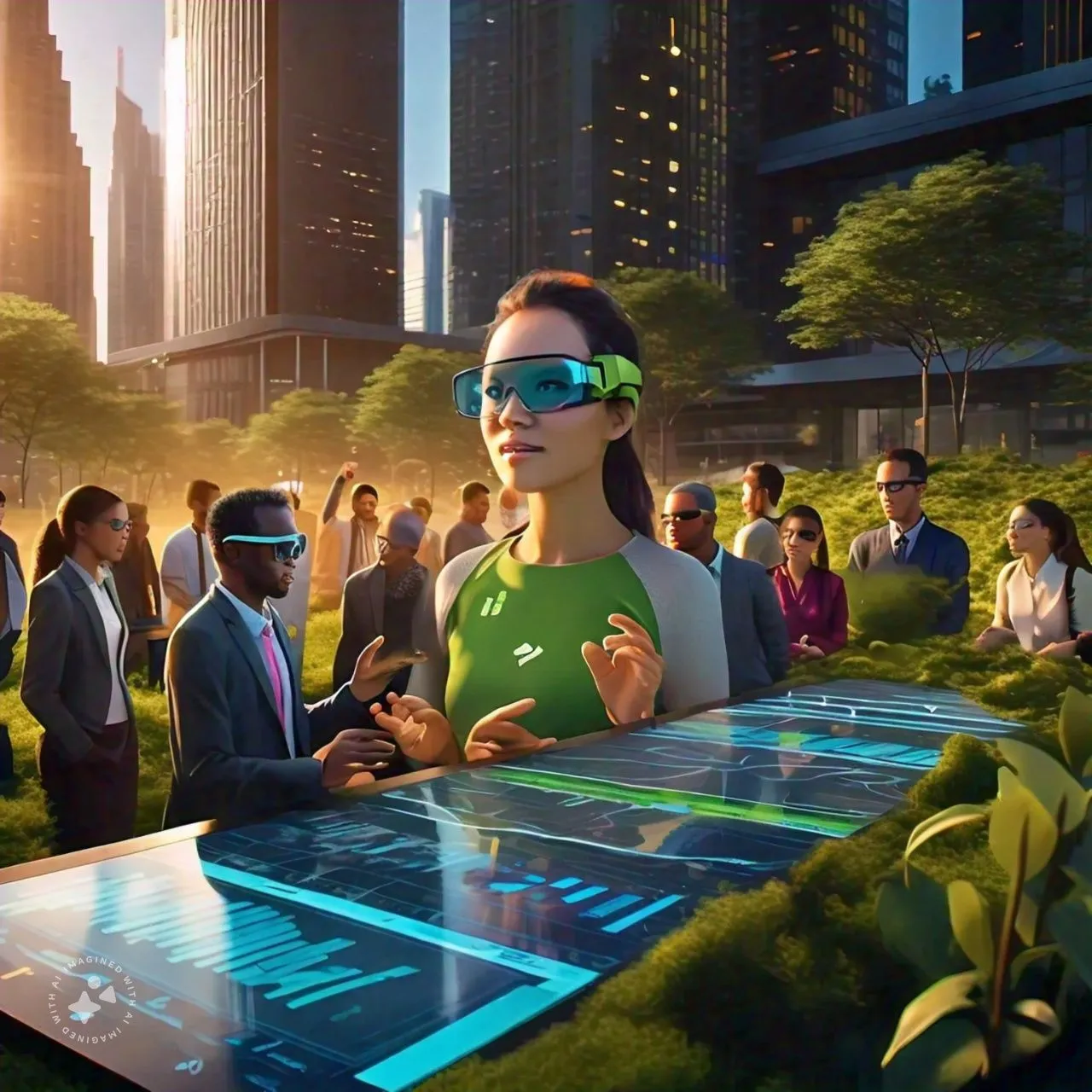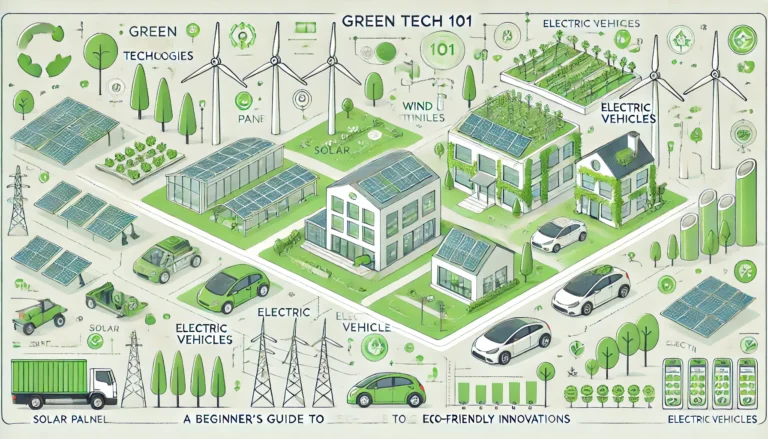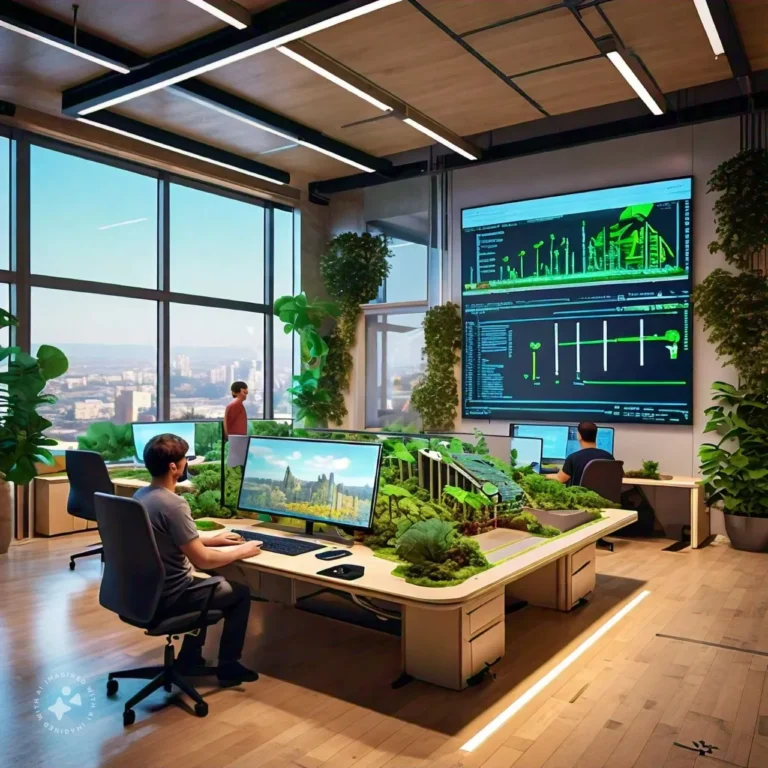Sustainable Energy Technology and Its Role in Future Growth
Introduction
We are faced with the urgent challenge of climate change and natural resources depleting in response to energy demand increasing across all continents. But on the upside, sustainable energy technology has arisen as a bright light of promise offering environmentally friendly and economically viable solutions. In this article, potential sustainable energy technologies are investigated in terms of what they can do now or offer the global development from a future perspective.
Why Sustainable Energy?
While the industrial revolution represented a massive leap in human advancement at large, it also ushered in an epoch of global pollution and entrenched use of fossil fuels. Now, as we grapple with the ever-increasing challenges of climate change including catastrophic weather events, sea level rise and biodiversity loss; there has never been a more pressing time to move away from fossil fuel carbon-based energy production. The Paris Agreement and the substantial number of national policies make clear that greenhouse gas mitigation in general, and fostering sustainable growth is an international commitment.

Sustainable energy technology has 4 core pillars
Sustainable energy includes technologies that account for everything from generating new sources of renewable power, acquiring it more efficiently or economically, distributing it over smart grids and finally integrating electricity storage solutions_designs. Key pillars include:
Renewable: Sun, wind, water (hydro), heat from the ground and biomass are all included in this group. These supply of energy that do not reduce the natural environment or significantly impair our ability to harness usable forms of land, and convert this into power.
Energy Storage Solutions: Energy storage is a necessary component to be able to better manage the grid and energy supply, especially alongside intermittent renewable sources as solar & wind. Efficient energy storage systems like batteries or pumped hydro-storage are – for example- capable of being used in cases where we have more dense power load than using our conventional coal / gas resources on all day long at full blast.
Smart Grids: Intelligent electricity networks that use digital communication technology to detect and react to local changes in usage, improving reliability.
Energy Efficiency Technologies: Improved building design, transportation systems and manufacturing processes all provide new ways to decrease energy use while meeting or exceeding performance specifications.
Harnessing the Power of Nature – Renewable Energy Sources
Solar Energy
Solar energy, besides being the most widely available renewable resource in all countries of the world can be harnessed through several technologies:
Function: Photovoltaic (PV) Cells – Which convert sunlight into electricity Improvements in the material like, perovskite that has pushed efficiency up and costs down.
Solar thermal energy:- This makes use of the solar power to trap sunlight and convert them to high temperature heat for producing electricity or doing some industrial processes.
Concentrated Solar Power (CSP): In this system hundreds of mirrors or lenses focus the sunlight onto a tiny area to be able to make high temperatures, these, in turn; generate electricity by operating conventional steam turbines.
Wind Energy
Wind energy is another rapidly growing sector, as well. Today’s wind turbines are more efficient and cost-effective than in the past, whether they be onshore or offshore:
Onshore Wind Farms: They are the most common and have advantages like comparatively lower installation and maintenance costs.
Offshore Wind Farms: Location, location — the higher and more constant wind speeds offshore means a cleaner stream of energy. Recent developments in technology have made offshore wind installations less expensive and more reliable.
Hydropower
Hydropower – The OG renewable energy source, but still a major player in global energy needs:
Dams large hydropower: may be able to generate lots of electricity, but have associated impacts with habitat destruction and displacement.
Hydro-Mini and Micro Hydro power systems: These types are environmentally friendlier with less impact, probably best suited to small scale local or regional powering.
Geothermal Energy
Geothermal Heat uses the heat from inside of planet Earth. This natural gas, with little environmental impact (far less than planet heating coal and oil) is a reliable form of energy:
Geothermal Power Plants: These generate electricity by trapping heat from the Earth’s crust in high-pressure liquids.
These energy solutions are typically more efficient and cost-effective for heating district heating, greenhouse or aquaculture ponds directly.
Biomass Energy
Energy from organic materials – biomass energy:- agriculture waste – forestry residues -dedicated energy crops.
Bioenergy Production: Biomass is used in biomass thermal conversion systems such as combustion, pyrolysis and gasification to generate heat/ electricity and biofuels (e.g., ethanol, biodiesel).
Sustainability Concerns Although biomass is renewable, it must be managed sustainably to avoid deforestation or loss of biodiversity and competition with food crops.
Shifting Supply and Demand: Energy Storage
Energy storage is essential for renewable energy integration into the grid, Reliability and matching supply to demand. Key technologies include:
Lithium-Ion Batteries: The most common form of batteries used in consumer electronics and electric vehicles is Li-ion. Modern versions have gotten better in terms of energy density, life and safety improvements.
Flow Batteries (ideal for large-scale energy storage as they can be sized up and specified with a long cycle life)
Pumped Hydro Storage – water is pumped uphill when demand for electricity is low and then released to generate power during periods of peak demand. How to store it: (The most efficient and affordable way)
Thermal Energy Storage (TES) – stores heat or cold for future use, most commonly in a concentrated solar power plant or community heating/cooling system.
The Future of Energy Distribution: Smart Grids
Smart grids are an advanced version of today’s electricity networks that use digital technology to improve reliability, safety, sustainability and the affordability of electrical services.
Smart Meters: The AMI allows two-way communication devices that allow energy use to be monitored and managed in real-time providing an opportunity for demand side management by consumers as well utilities.
Demand Response Programs: These encourage utility customers to eliminate or reduce their electricity use during a peak time by rewarding them.
Distributed Energy Resources (DER), which are small-scale power generation and storage technologies that provide electricity wherever the grid is. Distributed energy resources can includeAll DERs connect to a distribution system such as rooftop solar panels, home batteries etc.
Grid modernization: The future of energy distribution will depend on such factors as upgrading infrastructure to integrate renewable energy, improving resilience against natural events that can cause widespread outages (e.g., storms), and enhancing cybersecurity.
Since it is an energy-intensive operation, we developed cost-effective ways to reduce power consumption and costs.
Use energy more efficiently – Reducing our demand for power should always come first, but it’s an especially cost-effective way to cut greenhouse gas emissions and improve sustainability. Key areas of focus include:
Designing Buildings: Passive solar design, high-efficiency HVAC systems and insulation materials help to minimize energy use in buildings.
Electric vehicles (EV), hybrids, and improved public transportation systems are the.
Industrial Processes: From advancements in manufacturing to energy-efficient machines and even process optimization, industries can reduce their evaporation footprint.
Appliances and Lighting: Energy-efficient appliances along with LED light fixtures have significantly decreased energy use in homes
Role of Policy and Innovation
Government policy and technology also play a significant role in spurring sustainable energy adoption. Key strategies include:
Grants, tax credits and other incentives: Financial rewards given in the form of grants or reduced taxes could help promote renewable energy technologies.
Rules and Standards: Establishing stringent emission standards and efficiency requirements also help to adopt sustainable practices in the different sectors.
Research and Development: Making Investments in R&D could facilitate the process of technological advancements, lower costs as well increase efficiency levels for sustainable energy systems.
International Collaboration: By establishing global partnerships and agreements, as is clearly the case with Paris Agreement, it allows for collective action towards a sustainable energy future.
Challenges and Opportunities
Meanwhile, the transition to sustainable energy is a bit of a forward and backward dance with challenges as well as opportunities.
Challenges
Renewable Energy Intermittency: Solar and wind energy are intermittent (depending on the weather) thus needing reliable storage solutions as well as grid management
Upgrades to Infrastructure: Aging infrastructure that needs updating to support new technologies and maintain reliability is a large capital outlay.
Economic and Social Impacts: Shifting infrastructure away from fossil fuels can displace jobs and harm local communities with a stake in the existing energy economy.
Resource Availability: Certain renewable technologies (e.g., lithium-ion batteries) are dependent on rare earth materials, which raises concerns regarding resource availability and environmental implications.
Opportunities
Job Creation: There are many jobs in the renewable energy sector – often these are new manufacturing and installation-related occupations (solar panels, wind turbine parts), but also maintenance personnel to repair installations down-time, R&D roles.
Energy security: Energy self-reliance means that by using domestic renewable resources, less need exists for imported fossil fuels.
Additional Environmental Benefits: Lowering greenhouse gas emissions and pollution decreases human health impacts as well, such as the issues associated with climate change.
Economic Development: Renewable energy technologies provide new opportunities for innovation, entrepreneurship and job growth which is essential to the global economy.
Future Gaze: A Way Forward
With continued progress and growing global adoption, the future of sustainable energy is bright. Continued trends and developments to observe are:
Advancements in Emerging Technologies: Next-gen solar cells, high-density battery chemistries and advanced green hydrogen production are set to take energy sustainability a couple of notches up.
New forms of energy ownership – microgrids and community level generation and use: Where communities will generate their own power, thanks to things like rooftop solar panels but also larger-scale systems from shared resources.
This is part of The Digital Transformation: Currently, AI (artificial intelligence), blockchain and IoT (Internet of Things) technologies are being used in energy management systems to make them more efficient – transparent while increasing the resiliency.
Policy and Market Forces: A combination of persistent government help along with market-driven cost decreases will expedite the transition to clean energy.
Conclusion
Transitioning to green energy technology is a must and indeed an opportunity, because this time it allows the creation of a future that is resilient, inclusive and wealthy. We can find answers to the daunting problems of climate change and resource scarcity while promoting economic growth, social health – through a modern approach to my favorite topic: energy.
This is a voyage of transformation that requires partnerships between governments, businesses and communities. With collaboration and investment in clean energy, we can provide a cleaner environment for future generations. Now is the time to act, and a sustainable energy future is within our grasp.







